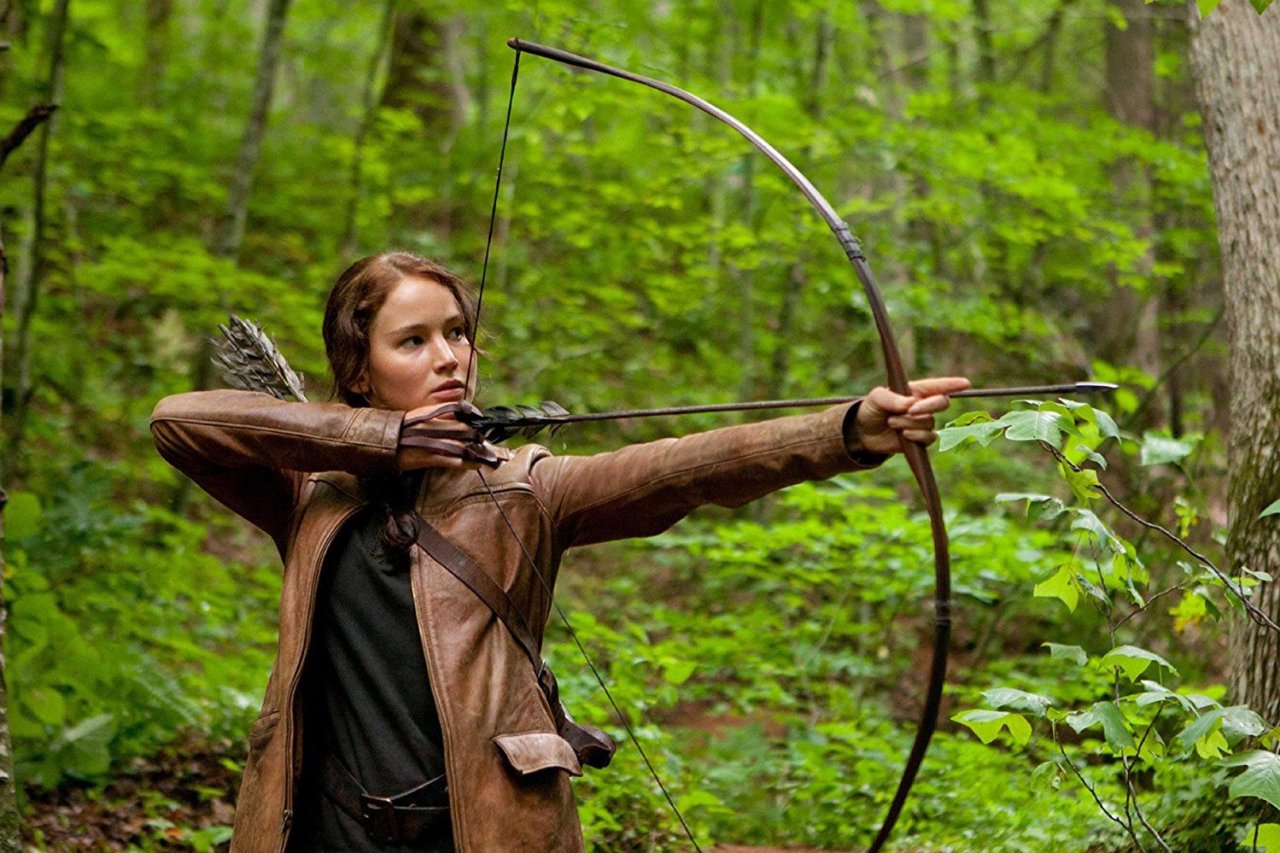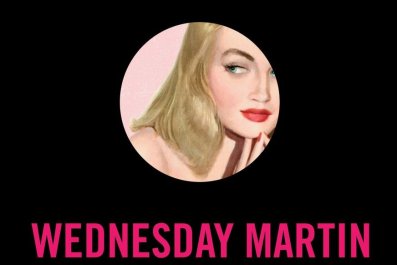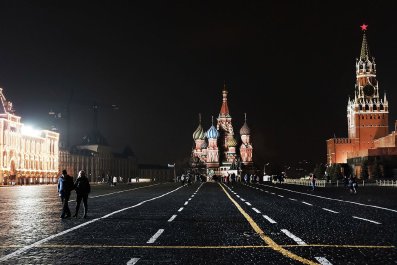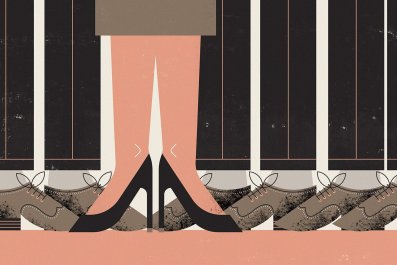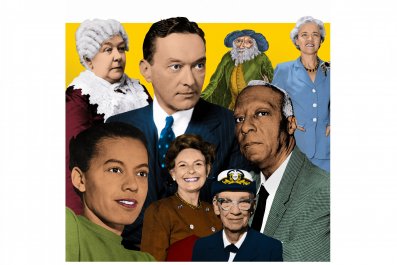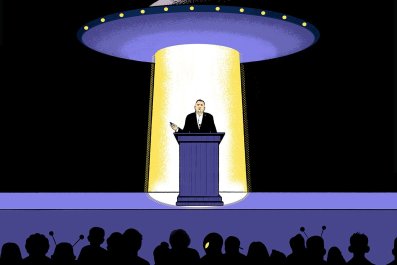When Emma Gonzalez called BS, when Edna Chavez chanted "Ricardo" to make us feel her loss, when Sarah Chadwick put her fist in the air to reveal that price tag, they were only doing what they had been taught.
Generation Z came of age at the height of a dystopian trend. We grew up reading The Hunger Games, Divergent, and The 100. These books showed us a world in which children's lives were used as currency to be traded and passed around like old, dirty coins, until a strong teenage heroine came along to stand up to the powers that be and start a revolution.
My question is: If we were raised to look up to these characters, why are people so surprised that we have become them?
The parallels between our current government and the themes of the most popular dystopian novels are striking. Every day, kids are killed on the streets, in their schools, and at the movies. Inexplicably, politicians have done nothing to stop this ongoing massacre.
Or perhaps it's not that inexplicable: They've chosen to stay complicit in this slaughter to keep their pocketbooks lined and their Congressional seats warm. Are they that different from The Hunger Games's President Snow, who "reaped" dozens of children annually to placate the masses?
Instead of being sent into an arena for a televised fight for our lives, we, in Gen Z, are sent to marches, town halls, and rallies for a televised fight for our lives.
German film critic Siegfried Kracauer theorized that pre-war German films foreshadowed Hitler and the ascent of the Nazi party. Similarly, I believe that the popularity of literature in which children are regularly brutalized, murdered, or left defenseless until they rally and fight back, paved the way for the current gun violence prevention movement.
Like the citizens of Panem witnessed annual Hunger Games for generations, the preventable mass slaying of children has become routine in America.
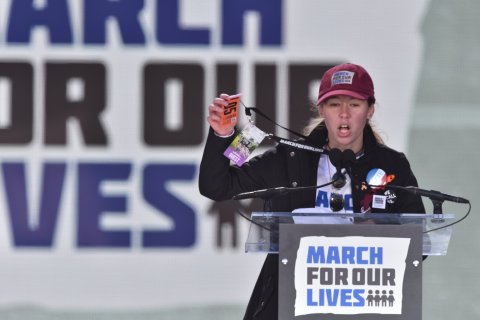
For years there have been several mass shootings that terrorize the country for days at a time. Eventually, the calls for action fade to whispers.
For years, communities of color have screamed for change, only to be muted by an indifferent nation.
For years, incidents like suicide by firearm and domestic gun violence were written off as isolated tragedies that would have happened with or without a gun.
March For Our Lives (MFOL) united our voices. Rather than pitting these narratives against each other and competing for airtime, they share the platform and the mic.
Since March 24, several states have passed legislation to ban bump stocks and raise the minimum purchasing age of a firearm to 21. The NRA has suffered major losses. None of that would have been possible without the unabashed intersectionality of MFOL.
While many millennials are condescendingly dubbed "slacktivists" for their tendency to post about issues on social media while failing to turn up to the polls, Gen Z has thrown itself headfirst into organization.
Divergent's Tris didn't take down a corrupt leader by tweeting about her discontent, she allied herself with her peers, harnessed their energy and frustration, and took action.
The current gun reform movement utilizes social media expertly. It's how we network, advertise our cause, and garner public support. But, unlike other online movements, our primary strategy is to orchestrate tangible demonstrations.
The National School Walkout was striking because it was indisputably obvious that over a million teens cared enough about this issue to physically do something about it. Some teens, like 224 of my classmates and I, care enough about this issue to receive Saturday morning detentions for that walkout.
I organized a detention protest, staging a 1960s-style sit-in complete with linked arms and tags with the names of the 17 who were killed in Parkland. A video of this detention went viral, amassing 3.4 million views. This led to an outpouring of support from people around the world, an invigorated group of 225 high schoolers, and, ultimately, an in-school suspension for me.
We could have simply taken the punishment and moved on, waiting till our 18th birthdays to take action at the polls and just make some noise on social media in the meantime.
46 of the #Pennridge225 served the first Saturday morning detention today. Pennridge students wore Parkland victims' names and sat, arms linked, for the whole dentention. A modern sit in. pic.twitter.com/sCuLxo9jE2
— Pennridge 225 (@NeverAgainPenn) March 17, 2018
Instead, we took what we learned from Katniss's heartbreaking tribute to Rue and Mare from The Red Queen's cunning organization tactics, combined it with our new age internet savvy, and gave ourselves a platform and a huge support network.
Through honing our dystopian-technological fusion brand of activism, our movement was able to hold the attention of the public and scare several politicians into rethinking gun reform.
The gun prevention movement is the result of a perfect storm: The coming of age of a generation raised to constantly look over our shoulders for a gun; politicians who have sat by and allowed us to grow up terrified that we would become the next gun violence statistic; and our childhood love of several bestselling dystopian novels that double as handbooks for how to take on a corrupt government.
There is one glaring difference between popular dystopian novels and the current gun reform movement: Instead of having one teenage savior, we have many.
Anna Sophie Tinneny, 18, is a recent graduate of Pennridge High School. She runs the Pennridge 225 Twitter account (@NeverAgainPenn) and recently organized a march, Still Marching Philadelphia, to raise awareness for daily gun violence in the city of Philadelphia.
The views expressed in this article are the author's own.
Updated | This article has been updated to include a reference to The Red Queen.



